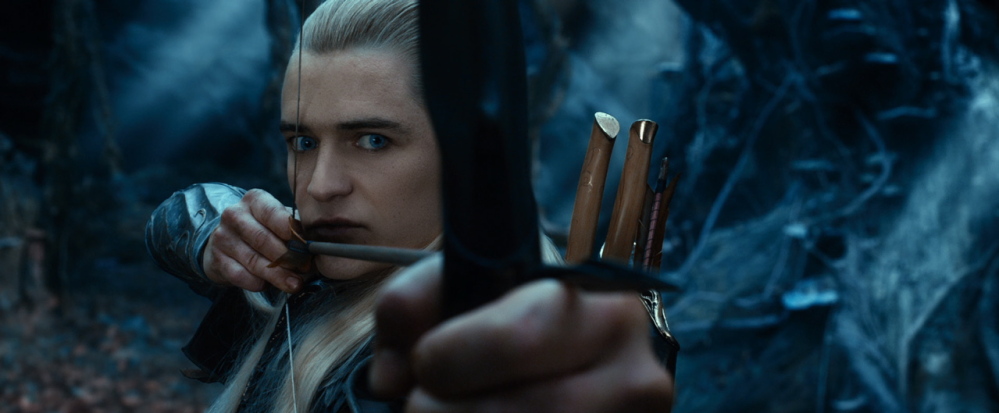Having been a Peter Jackson enthusiast since he was just that big, hairy New Zealand weirdo making thoroughly disreputable, hilariously offensive fare like “Meet The Feebles,” “Dead Alive” and the never-more-appropriately named “Bad Taste,” I’ve been thrilled at his mainstream success.
After his still-stunning true crime/fantasy/romance “Heavenly Creatures” brought him popular acclaim, Jackson launched his long-gestating “Lord of the Rings” trilogy and, it’s fair to say, conquered the world.
Hauling in a dragon’s hoard of both cash and critical high-fives, and even managing to please all but the most curmudgeonly Tolkien purists, the trilogy is a stunning feat of filmmaking – easily the greatest fantasy/sci fi literary adaptation ever. So it was only natural that Jackson would turn to the book that started it all and make a film of “The Hobbit.” Talk about a sure thing, right?
Well …
Look, it’s not that Jackson’s first (of three) Hobbit films (“The Hobbit: An Unexpected Journey”) was bad – or even anything like bad. Anchored by a truly lovely performance by the perfectly cast Martin Freeman as Bilbo Baggins, and packed with Jackson’s signature blend of action, humor and technical mastery, the film is consistently entertaining, and “The Hobbit: The Desolation of Smaug,” opening tomorrow, promises more of the same.
So what am I complaining about?
Unlike the “LOTR” trilogy, Jackson’s decision to turn the smaller-scale, more unassuming “Hobbit” into another nine-hour, three-film epic suffers from a certain thinness. With less to draw from and more time to fill, the first film felt padded, with Bilbo and his gaggle of companions engaging in a series of loud, extended, IMAX-friendly action sequences that often devolve into chaotic busyness. For a three-hour movie, the whole enterprise often seems rushed, and under-dramatized.
Adaptations are a tricky business, and while it seems ungrateful to fault Jackson for overambition, well, that’s what I’m doing.
Of course, it’s possible to take things too far the other way, as witnessed by David Lynch’s disastrous screen adaptation of Frank Herbert’s equally epic “Dune.” And while the resulting film doesn’t exactly clamor for another two installments, trying to cram the book’s approximately 10,000 characters into its studio-mandated two hours made for an incoherent mess. Initial audiences were provided with cheat sheets to make some sort of sense of what followed. It didn’t help.
Tolkien’s creation endured its own calamitous screen abridgment when “Rudolph the Red-Nosed Reindeer” animators Rankin/Bass compressed “The Hobbit” and all three “Lord of the Rings” novels into two 90-minute cartoons that, apart from some truly atrocious character designs (the hobbits look like squat maiden aunts while Gollum resembles some sort of monkey-frog), turn the saga into a crudely drawn atrocity. (Cult animator Ralph Bakshi’s “Lord of the Rings,” while marginally better, suffered from the same streamlined dumbing-down, and Bakshi’s trademark penny-pinching.)
So what does “The Hobbit’s” troubled screen history tell us? Well, perhaps sometimes it’s preferable to curl up with a good book.
Dennis Perkins is a Portland freelance writer.
Send questions/comments to the editors.



Success. Please wait for the page to reload. If the page does not reload within 5 seconds, please refresh the page.
Enter your email and password to access comments.
Hi, to comment on stories you must . This profile is in addition to your subscription and website login.
Already have a commenting profile? .
Invalid username/password.
Please check your email to confirm and complete your registration.
Only subscribers are eligible to post comments. Please subscribe or login first for digital access. Here’s why.
Use the form below to reset your password. When you've submitted your account email, we will send an email with a reset code.